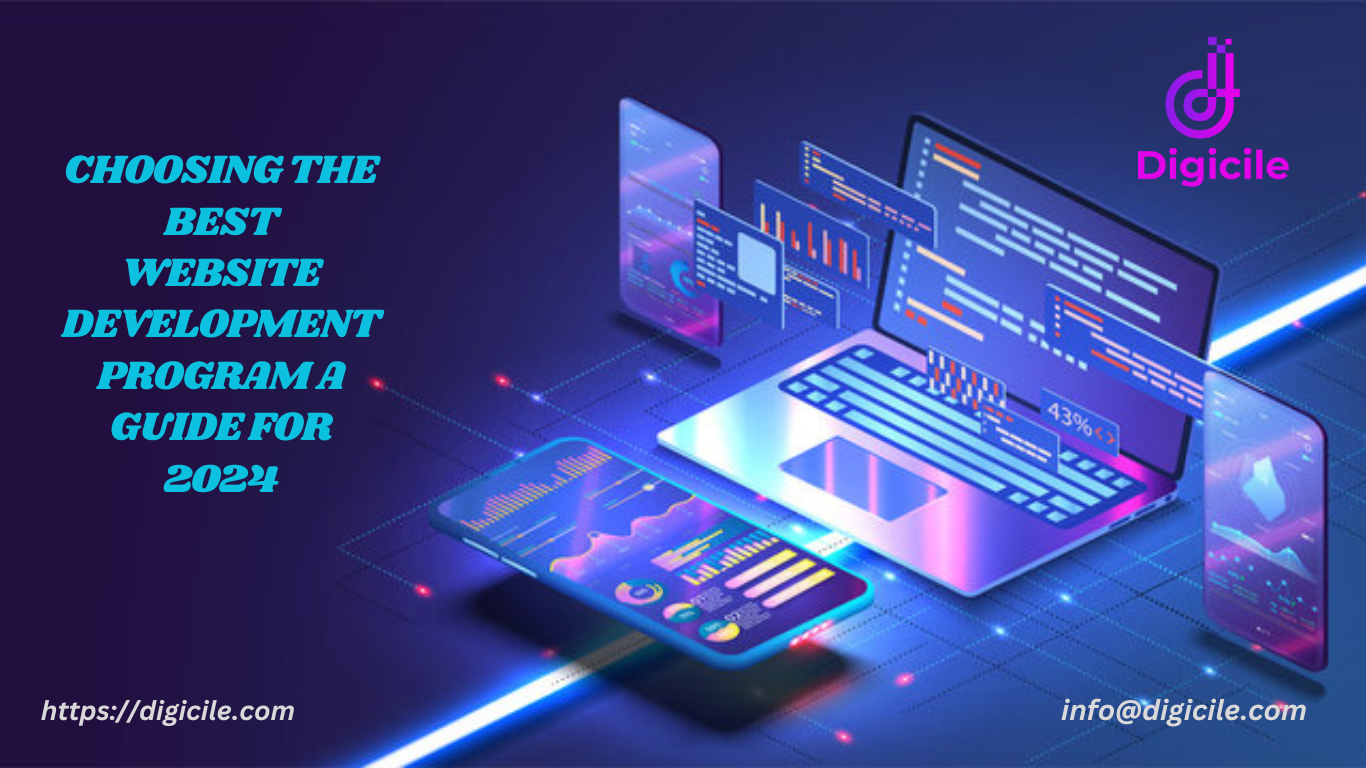In 2024, selecting the right website development program is crucial for building effective and engaging web applications. Whether you’re a beginner looking to launch a personal blog or an experienced developer aiming to create a complex enterprise solution, the right tools can make all the difference. This guide will help you navigate the various options available and choose the best website development program for your needs.
1. Understanding the Types of Website Development Programs
Website development programs come in various forms, each catering to different needs and skill levels. Here are the main types to consider:
Content Management Systems (CMS): These platforms are designed to simplify website creation and management without extensive coding knowledge. Popular CMS options include:
- WordPress: The most widely used CMS, WordPress offers a vast selection of themes and plugins, making it highly customizable. It’s suitable for everything from blogs to e-commerce sites and has strong community support.
- Joomla: Known for its flexibility and extensive functionality, Joomla is ideal for more complex websites. It has a steeper learning curve than WordPress but provides greater control over site structure and features.
- Drupal: A powerful CMS suited for large-scale and highly customized websites. Drupal’s robust architecture supports complex content types and advanced user permissions.
Website Builders: These tools offer a user-friendly interface for creating websites through drag-and-drop functionality. They are perfect for beginners or those needing a quick setup. Key players include:
- Wix: Wix is known for its intuitive drag-and-drop editor and a wide range of customizable templates. It’s great for small businesses and personal websites that need a professional look without the hassle.
- Squarespace: Squarespace provides elegant, designer-quality templates and strong e-commerce capabilities. It’s ideal for creatives and businesses that prioritize aesthetics and ease of use.
- Weebly: Weebly offers a straightforward website-building experience with a focus on simplicity. It’s suitable for small businesses and personal sites that require essential features without complex customization.
Code Editors and IDEs: For those with coding skills, code editors and integrated development environments (IDEs) offer flexibility and control over website development. Some popular choices are:
- Visual Studio Code: A versatile code editor that supports multiple programming languages and integrates with numerous extensions. It’s suitable for both front-end and back-end development.
- Sublime Text: Known for its speed and efficiency, Sublime Text is favored by developers for its clean interface and powerful features like multi-editing.
- Atom: An open-source editor developed by GitHub, Atom offers extensive customization options and a range of plugins, making it ideal for a tailored development experience.
Frameworks and Libraries: For advanced development, frameworks and libraries provide robust tools for building complex web applications. Key frameworks include:
- React: A JavaScript library for building user interfaces, React is popular for its component-based architecture and efficient rendering. It’s great for creating dynamic and interactive web applications.
- Angular: A comprehensive JavaScript framework for building single-page applications (SPAs), Angular offers extensive features and tools for complex projects.
- Vue.js: A progressive JavaScript framework that is easy to integrate and provides a flexible approach to building web applications. Vue.js is known for its simplicity and performance.
Static Site Generators: For those seeking fast, SEO-friendly websites, static site generators offer a solution by pre-generating HTML pages. Popular options include:
- Next.js: A React-based framework that supports static site generation and server-side rendering, ideal for high-performance and scalable applications.
- Gatsby: Another React-based generator known for its fast performance and extensive plugin ecosystem. Gatsby is well-suited for content-heavy websites.
2. Factors to Consider When Choosing a Website Development Program
Ease of Use: Assess your comfort level with coding and development tools. CMS platforms and website builders are user-friendly, while code editors and frameworks offer more control but require coding expertise.
Customization and Flexibility: Determine how much customization you need. CMS platforms and website builders offer varying degrees of customization, while code editors and frameworks provide more flexibility.
Support and Community: Look for programs with strong community support and extensive documentation. This can be invaluable for troubleshooting issues and learning new skills.
Integration and Extensibility: Consider the availability of plugins, extensions, and integrations that can enhance functionality and streamline your development process.
Cost: Evaluate the cost of the program, including any fees for themes, plugins, or hosting services. Some tools offer free versions with optional paid upgrades.
Scalability: Think about your long-term needs. Choose a program that can scale with your project, whether it’s handling increased traffic, additional features, or complex functionality.
3. Trends in Website Development for 2024
AI-Powered Development Tools: Artificial intelligence is increasingly being integrated into website development tools, offering features like automated code suggestions, design recommendations, and content generation.
Enhanced Mobile Optimization: With mobile traffic continuing to rise, optimizing websites for mobile devices is more critical than ever. Look for programs that offer responsive design and mobile-friendly features.
Increased Focus on Security: As cyber threats become more sophisticated, website development programs are incorporating advanced security features to protect data and ensure safe user interactions.
Serverless Architectures: Serverless computing is gaining traction, allowing developers to build and deploy applications without managing server infrastructure, reducing operational overhead and complexity.
Progressive Web Apps (PWAs): PWAs provide a native app-like experience on the web, offering features like offline access and push notifications. They are becoming increasingly popular for their improved user experience and performance.
Conclusion
Choosing the best website development program in 2024 depends on your specific needs, technical skills, and project requirements. By understanding the various options available—from CMS platforms and website builders to code editors and frameworks—you can make an informed decision that aligns with your goals. Embracing emerging trends and staying updated with the latest tools will ensure that your website development projects are successful and future-proof.






